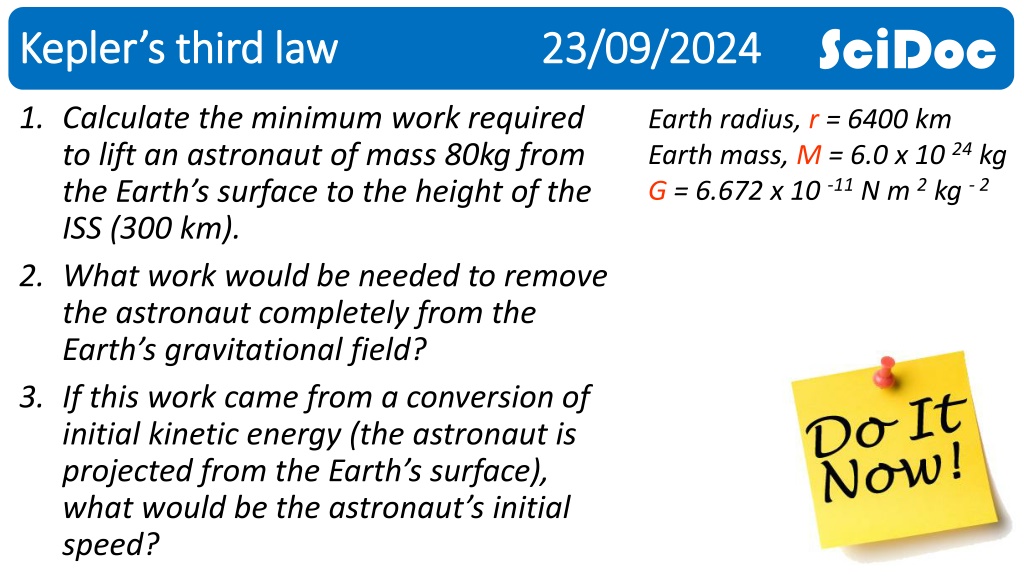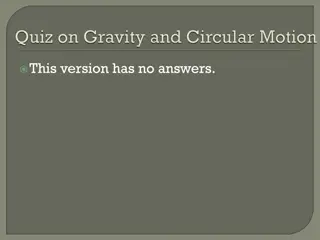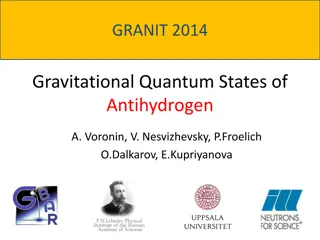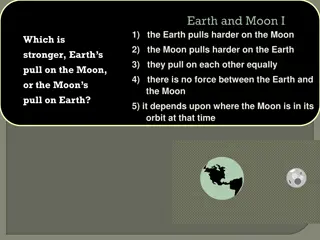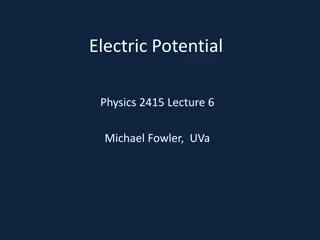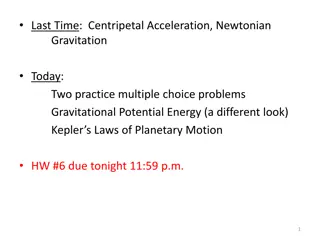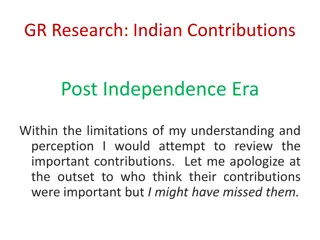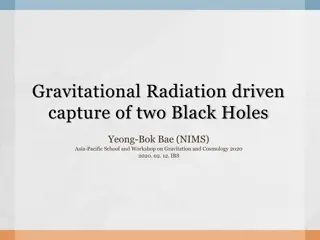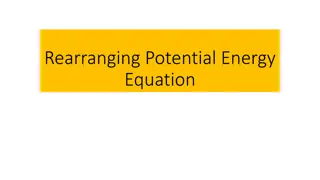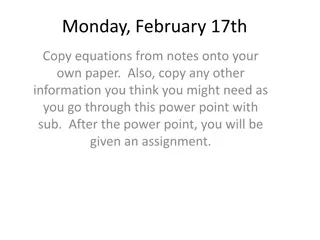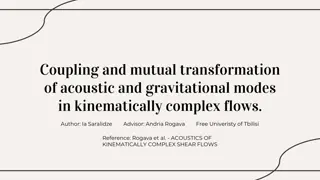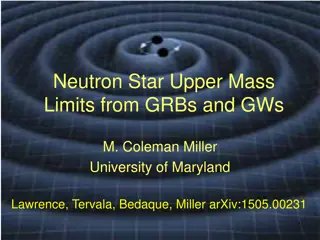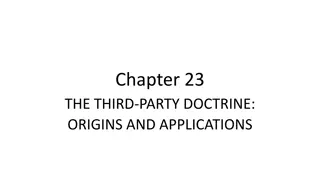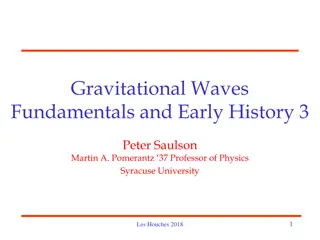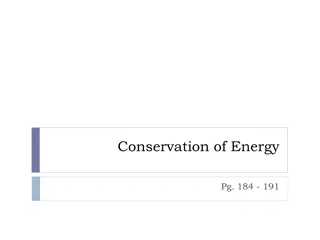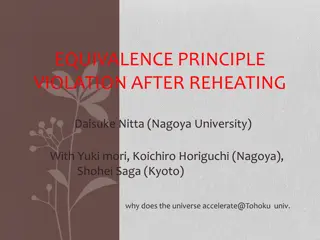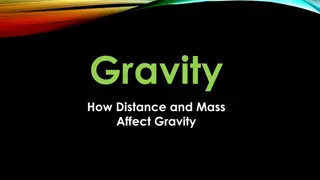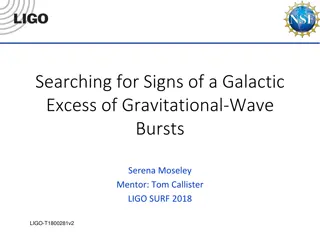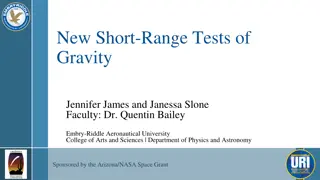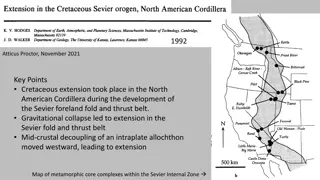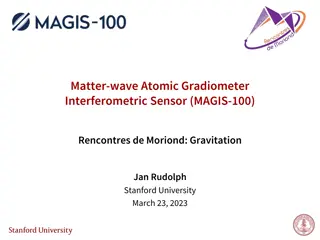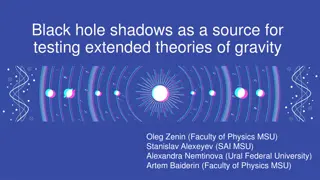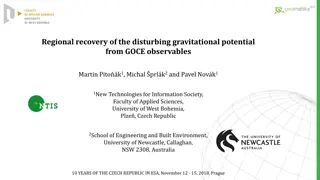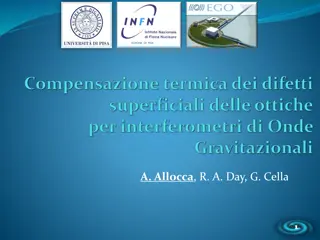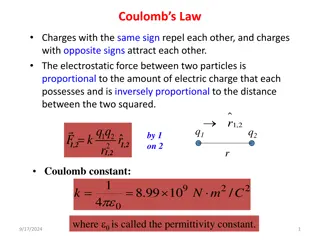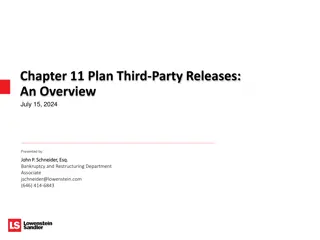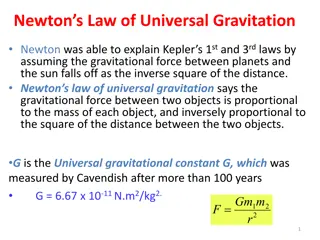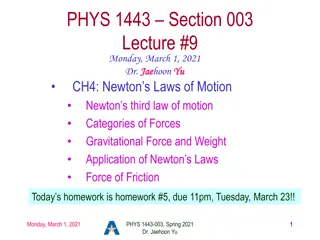Understanding Kepler's Third Law and Gravitational Work
Kepler's third law relates the orbital period of a planet to its distance from the Sun. In this scenario, we calculate the work required to lift an astronaut from Earth to the ISS and remove them from Earth's gravitational field. We also determine the initial speed needed to project the astronaut from Earth's surface. Additionally, the relationship between the planet's speed and gravitational force on a satellite is discussed.
Download Presentation

Please find below an Image/Link to download the presentation.
The content on the website is provided AS IS for your information and personal use only. It may not be sold, licensed, or shared on other websites without obtaining consent from the author. Download presentation by click this link. If you encounter any issues during the download, it is possible that the publisher has removed the file from their server.
E N D
Presentation Transcript
SciDoc Kepler s third law Kepler s third law 23/09/2024 23/09/2024 1. Calculate the minimum work required to lift an astronaut of mass 80kg from the Earth s surface to the height of the ISS (300 km). 2. What work would be needed to remove the astronaut completely from the Earth s gravitational field? 3. If this work came from a conversion of initial kinetic energy (the astronaut is projected from the Earth s surface), what would be the astronaut s initial speed? Earth radius, r = 6400 km Earth mass, M = 6.0 x 10 24 kg G = 6.672 x 10 -11 N m 2 kg - 2
SciDoc Question 1 review Question 1 review V = - G M / r V at Earth surface: r = 6.4 x 10 6 m = - (6.672 x 10 -11) x (6.0 x 10 24 ) / 6.4 x 10 6 = - 6.26 x 10 7 Jkg -1 V at ISS: r = 6.7 x 10 6 m = - 5.97 x 10 7 Jkg -1 V = (6.26 5.97) x 10 7 Jkg -1 = 2.9 x 10 6 Jkg -1 W = m x V = 80 kg x 2.9 x 10 6 Jkg -1 Work = 2.32 x 10 8 J = 232 MJ
SciDoc Question 2/3 review Question 2/3 review 2. V = (6.26 0) x 10 7 Jkg-1 = 6.26 x 10 7 Jkg-1 W = m x V = 80 kg x 6.26 x 10 7 Jkg-1 Work = 5.01 x 10 9 J = 5 010 MJ 3. m v 2 = W = 5.01 x 10 9 J v2 = (2 x 5.01 x 10 9 J) / 80 kg v2 = (10.02 x 10 9 J) / 80 kg v2 = 1.25 x 10 8 speed, v = 1.12 x 104 ms-1 (11 kms-1) This is called the escape speed.
SciDoc Kepler s third law Kepler s third law Johannes Kepler made very careful measurements of planetary motion. He measured the time period, T, for each planet (i.e. how long it look a planet to orbit the sun) and the average radius of its orbit. Kepler noticed that the value: ?3 ?2 Stretch: If the radius is doubled, what happens to the time period? remained constant.
SciDoc Kepler s third law Kepler s third law Johannes Kepler made very careful measurements of planetary motion. He measured the time period, T, for each planet (i.e. how long it look a planet to orbit the sun) and the average radius of its orbit. He noticed that the value: ?3 ?2 remained constant.
SciDoc T/N: Satellite motion T/N: Satellite motion Newton showed that the gravitational force of a planet on a satellite is ? =??? ?2. The gravitational field strength is therefore given by: ? =?? ?2 This is therefore equal to the centripetal acceleration: ? =?2 ? The speed of the planet is therefore given by: ?2=?? ?
SciDoc T/N: Satellite motion T/N: Satellite motion Because speed ? =circumference of the orbit =2?? time period =?? ? ? 2??2 ?2 We therefore get: Rearranging this, we obtain: ?3 ?2= ?? 4?2 Because the RHS of this equation is the same for all planets (G is gravitational constant, M is mass of the sun), then ?3 ?2 is always constant.
SciDoc Geostationary satellites Geostationary satellites A geostationary satellite orbits the Earth directly above the equator and has a time period of exactly 24h. It therefore remains in a fixed position above the equator because it has exactly the same time period as the Earth s rotation. We can use Kepler s third law: ?3 ?2=?? 4?2 The mass of the Earth is 5.98 1024 kg, and the radius of the Earth is 6400 km. Calculate the height of a geostationary satellite above the Earth.
SciDoc Satellite motion Satellite motion ?3 ?2=?? The equation can be re-worded to say: 4?2 ?2 ?3 Stretch: Given ? = 6.67 10 11 Nm2kg-2, demonstrate that the mass of the Sun is 2.0 1030 kg. (use the data in the table)
SciDoc Task Task Complete the questions.
SciDoc Answers Answers 1. Gravitational attraction GMm/r2. v = 2 r/T GMm/r2 = GM/r GM/r T2 2. By Kepler s third law, orbital period increases with orbital radius. Thus B has the longer orbital period. rB/rA = 2.8 x 107/ 7.0 x 106 = 4 (rB/rA)3 = 43 = 64 By Kepler s third law, (TB/TA)2 = (rB/rA)3 = 64 Thus TB/TA = square root of 64 = 8 mv2/r = = = 3. A satellite that appears to be stationary over a point on the Earth s equator. The orbit of such a satellite is circular and over the Earth s equator as the satellite s orbital centre is the centre of the Earth, and the only points on Earth that orbit its centre are those on the equator. m (2 r/T)2 4 2r2m/T2 (4 2/GM) r3 Such a satellite might be used for communications, e.g. satellite broadcasting. T2 = (4 2/GM) r3 r3 = (GM/4 2) T2 (6.67 x 10-11 x 6.0 x 1024 / 4 2) x (24 x 60 x 60)2 7.567 x 1022 m3 (4sf) Therefore, r = 4.23 x 107 m (3sf) Height above Earth s surface is 4.23 x 107 6.4 x 106 = 3.59 x 107 m or 36,000 km. = =
SciDoc Answers Answers 6. 3 90 3 105 R R 4. 10 hours = 2 2 T T 90 105 3 105 3 R ( 6650 km) = r3 = (GM/4p2) T2 = (6.67 x 10-11x 1.9 x 1027/ 4p2) x (10 x 60 x 60)2 4.160 x 1024m3(4sf) 1.61 x 108 m (3sf) 2 2 ( minutes) 90 minutes) 105 ( 11 3 4 2 9 . 2 ( 10 km ) 1 . 1 ( 3 10 minutes 2 ) 3 105 = R 1 . 8 10 minutes = = R 7330 km Therefore, r = 7330 = = height km 6370 km 960 km range 960 to km 280 is km 5. 3 3 42 200 km R = 2 2 24 h 5 . 1 h 7. Low orbits give smaller image detail; higher orbits give greater coverage and endurance (because there is less atmospheric friction). 8. Orbital period / minutes Minimum height / km Maximum height / km Mean height / km Mean radius / km R3 / T2 36 x 106 so 3 2 5 . 1 42 200 km h = = R 6650 km . 3 2 24 h 4 October 1957 96.2 25 October 1957 95.4 25 December 1957 91.0 Therefore 219 941 580 6950 216 866 541 6911 196 463 330 6700 = = h 6650 km 6370 km 280 km . 36 x 106 36 x 106 three significant figures hours 24 The Kepler ratio for each case is the same; the deviation from the mean height decreases, so the orbit becomes more like a circle. Average orbit time was 93.6 minutes. In 3 months (90 days) it made approximately = = number of orbits 16 1.5 hours 1 1 days 90 hours 24 day 60 min hr = 1400 orbits 94 min
SciDoc Exam question Exam question Complete the exam question.
